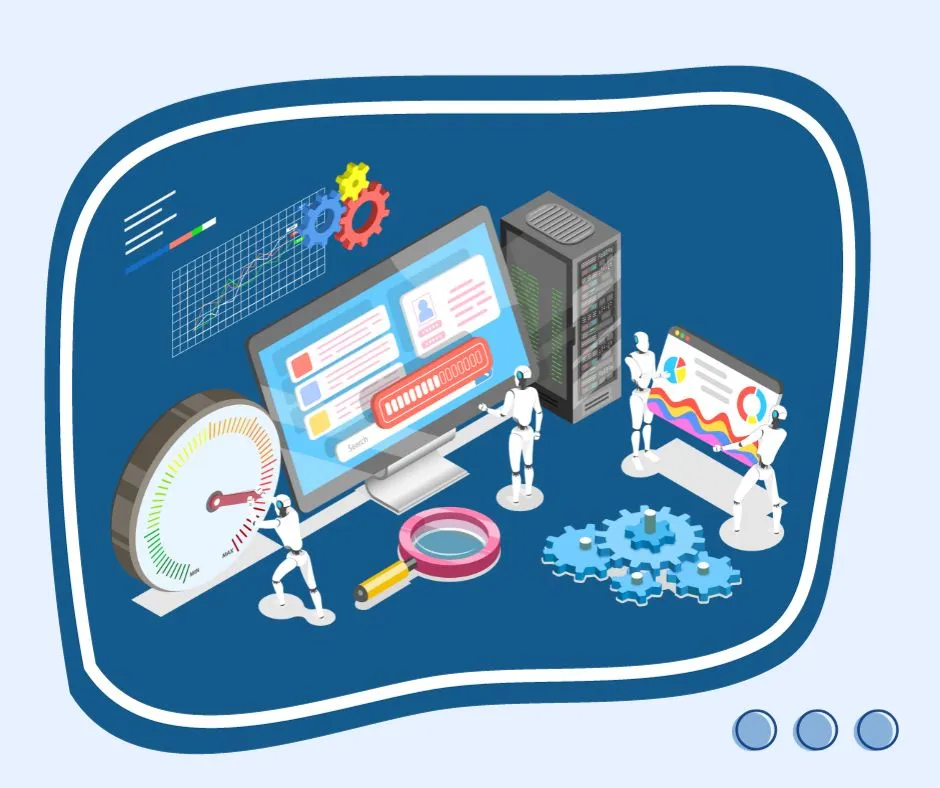Effective Digital Marketing Campaign Strategies
In today's digital world, digital marketing is one of the most important ways for businesses to reach their customers and build their brand. However, with so many different strategies available, it can be difficult to know where to start.
 Here are some effective digital marketing campaign strategies that you can use to boost your business:
Here are some effective digital marketing campaign strategies that you can use to boost your business:
1- Set your goals
Before you start any digital marketing campaign, it is important to set your goals. Do you want to increase brand awareness? Increase visits to your website? Increase sales? Once you know what you want to achieve, you can develop a strategy that is designed to meet those goals.
2- Understand your customers
It is also important to understand your target customers before you start any digital marketing campaign. Who are they? What are their interests? What channels do they use online? Once you understand them, you can create content and messages that are better targeted.
3- Create high-quality content
Content is the cornerstone of any successful digital marketing campaign. Your content should be high-quality, engaging, and useful for your customers. It should encourage them to interact with you and share your content.
4- Use the right marketing channels
There are many different digital marketing channels available, such as social media, email marketing, and search engine optimization (SEO). It's important to choose the right channels for your customers and goals.
5- Track your analytics
It's important to track your analytics to see how well your digital marketing campaigns are performing. This will help you identify what's working and what's not, so you can make adjustments as needed.
Here are some specific strategies you can use in your digital marketing campaigns:
1- Social media marketing: Social media marketing is a great way to connect with your customers and build relationships with them. You can use social media to share your content, interact with followers, and launch paid advertising campaigns.
2- Search engine optimization (SEO): Search engine optimization (SEO) helps improve the ranking of your website in search results. This can lead to increased visits to your website and attract new customers.
3- Content marketing: Content marketing is a great way to demonstrate your expertise and build trust with your customers. You can create content such as articles, guides, and videos that cover topics relevant to your audience.
4- Paid advertising: Paid advertising can help you reach a larger segment faster. You can use paid advertising to create ads on social media, search engines, or other websites.
Using these strategies, you can create effective digital marketing campaigns that will help you achieve your business goals.
Setting marketing goals
Setting marketing goals is an important step in any marketing campaign. Goals help you focus your efforts and measure your progress.
Here are some tips for setting effective marketing goals:
1- Make your goals specific, measurable, achievable, relevant, and time-bound: Your goals should be clear, easy to understand, and measurable so you can track your progress. They should also be achievable, so they are realistic and attainable. They should be relevant to your overall business goals. They should be time-bound, so you have a specific timeframe to achieve them.
2- Consider your overall business goals: Your marketing goals should be connected with your overall business goals. For example, if you want to increase sales, you need to set a specific marketing goal such as "increase sales by 10% in the next quarter."
3- Understand your target customers: It's important to understand your target customers before setting your marketing goals. What are their interests? What are their needs? What are their pain points? Understanding them will help you set relevant and effective marketing goals.
Here are some examples of marketing goals:
1- Increase brand awareness by 50% in the next quarter.
2- Increase website visits by 20% in the next month.
3- Increase sales by 10% in the next quarter.
4- Increase email response rate by 15% in the next month.
Once you have defined your marketing goals, you can start developing an effective marketing strategy to achieve them.
Effectively Setting Marketing Goals Step

Here are the steps to effectively set marketing goals:
1- Define your overall goals: What are the goals you are trying to achieve through your marketing efforts? Do you want to increase brand awareness, increase website traffic, or increase sales?
2- Understand your target customers: Who are you targeting with your marketing efforts? What are their interests? What are their needs? What are their pain points? Understanding your target audience will help you define marketing goals that are relevant and effective.
3- Use the SMART goal framework: The SMART goal framework is a framework that helps you define goals that are specific, measurable, achievable, relevant, and time-bound.
4- Set a timeframe: How long do you want it to take to achieve your marketing goals?
5- Review your goals regularly: Over time, you may need to adjust your marketing goals based on the results you have achieved and changes in the market.
Here are some additional tips for effectively setting marketing goals:
1- Be realistic: Don't set goals that are unrealistic or difficult to achieve.
2- Be flexible: Over time, you may need to adjust your marketing goals based on the results you have achieved and changes in the market.
3- Measure your progress: It's important to measure your progress towards your marketing goals so you can see if you're on track.

Understanding Buyer Personalities
Buyer personalities are fictional representations of your target customers. They are a way to better understand the needs, wants, and behaviors of your customers. Buyer personas can help you develop more effective and cost-effective marketing campaigns.
What are buyer personas?
Buyer personas are fictional representations of your target customers. They describe a group of people who are most likely to buy your products or services. Buyer personas typically include the following information:
1- Demographics: such as age, gender, and geographic location.
2- Behavioral: such as their interests, needs, and shopping behaviors.
3- Psychological: such as their values, goals, and pain points.
Why Buyer Personas Are Important?
Buyer personas are important because they help you understand your customers better. When you understand your customers, you can create content and marketing messages that are more relevant and effective. This can lead to increased sales, brand awareness, and customer satisfaction.
How to Use Buyer Personas in Marketing?
You can use buyer personas in all aspects of your marketing efforts. You can use them to create more relevant content and marketing messages, identify the right marketing channels, and develop more effective marketing strategies.
Here are some examples of how you can use buyer personas in marketing:
1- Create targeted content: For example, if you have a buyer persona who is interested in health and fitness, you can create content about your products or services that relate to health and fitness.
2- Identify the right marketing channels: For example, if you have a buyer persona who uses social media frequently, you can focus on social media marketing.
3- Develop more effective marketing strategies: For example, if you have a buyer persona who is value-conscious, you can focus on providing greater value to your customers.
Understanding buyer personas is an essential part of any successful marketing strategy. Buyer personas can help you create more effective and cost-effective marketing campaigns.
Choosing the Right Marketing Channels
Choosing the right marketing channels is one of the most important decisions you will make as a business. The right marketing channels can help you reach your target audience and achieve your marketing goals.
Here are some factors to consider when choosing the right marketing channels:
 1- Your marketing goals: What are you trying to achieve with your marketing campaigns? Do you want to increase brand awareness, drive traffic to your website, or generate leads?
1- Your marketing goals: What are you trying to achieve with your marketing campaigns? Do you want to increase brand awareness, drive traffic to your website, or generate leads?
2- Your target audience: Who are you targeting with your marketing efforts? What are their interests? What are their needs? What are their pain points?
3- Your budget: How much money do you have to spend on marketing?
4- Your capabilities: What skills and experience do you have?
Types of Marketing Channels
There are many different types of marketing channels available, including:
1- Social media marketing: Social media marketing is a great way to connect with your target customers and build relationships with them. You can use social media to share your content, interact with followers, and launch paid advertising campaigns.
2- Email marketing: Email marketing is an effective way to stay connected with your customers and encourage them to take action. You can use email marketing to send newsletters, promotions, and information about your products or services.
3- Search engine optimization (SEO): Search engine optimization (SEO) helps improve the ranking of your website in search results. This can lead to increased visits to your website and attract new customers.
4- Content marketing: Content marketing is a great way to demonstrate your expertise and build trust with your customers. You can create content like articles, guides, and videos that cover topics relevant to your customers.
5- Paid advertising: Paid advertising can help you reach a larger segment faster. You can use paid advertising to create ads on social media, search engines, or other websites.
How to Choose the Right Marketing Channels
Here are some tips for choosing the right marketing channels:
1- Start with your marketing goals: What are you trying to achieve with your marketing campaigns? This will help you identify the channels that will help you reach your goals.
2- Understand your target audience: Who are you targeting with your marketing efforts? What are their interests? What are their needs? What are their pain points? Understanding your target customers will help you identify the channels that they are most likely to use.
3- Research the different channels available: Read about the pros and cons of each channel.
4- Set a budget: How much money do you have to spend on marketing? This will help you identify the channels that you can afford.
5- Experiment with different channels: Don't be afraid to try different channels to see what works for you.
Choosing the right marketing channels is an ongoing process. You should review your channels regularly to ensure that they are still effective in achieving your marketing goals.
Steps to Create Engaging and Informative Content
Creating engaging and informative content is essential for any business or brand that wants to reach its target customers and achieve its goals.
Here are some steps you can take to create great content:
1- Understand your target customers: It is important to understand your target customers before you start creating any content. What are their interests? What are their needs? What are their pain points? Once you understand your target audience, you can create content that meets their needs and captures their attention.
2- Define your goals: What are you trying to achieve with your content? Do you want to increase brand awareness? Increase visits to your website? Increase sales? Once you define your goals, you can create content that is targeted towards achieving those goals.
3- Choose the right content format: There are many different content formats you can use, including articles, guides, videos, webinars, and presentations. Choose the content format that is right for your customer and your goals.
4- Use clear and concise language: Your content should be clear and easy to understand. Avoid using technical jargon or terms that your customers may not know.
5- Use images and graphics: Images and graphics can help make your content more engaging and interesting. Use images and graphics that are relevant to the topic you are writing about.
6- Do your research and use reliable sources: Your content should be accurate and up-to-date. Do your research and use reliable sources to ensure the information you are providing is accurate.
7- Make sure your content is informative: Your content should provide value to your customers. Offer new, useful, or thought-provoking information.
8- Proofread your content: Before you publish your content, proofread it for any spelling or grammatical errors. This will help to ensure that your content looks professional and accurate.
9- Publish your content: Once you are satisfied with your content, publish your content on the right channels. Make sure to promote your content so that your customers can see it.
Additional Tips for Creating Engaging and Informative Content
1- Make your content enjoyable and interesting: Your content should be something that your audience wants to read, watch, or listen to.
2- Use clear and concise writing style: Avoid using flowery language or jargon that your audience may not understand.
3- Use images and graphics that are relevant to the topic you are writing about: Images and graphics can help make your content more engaging and interesting.
4- Be accurate in the information you provide: Do your research and use reliable sources to ensure that your information is accurate.
5- Proofread your content several times for spelling and grammar errors: This will help ensure that your content looks professional and accurate.
By following these steps and tips, you can create content that is both engaging and informative and will capture the attention of your customers and achieve your goals.
Using the Right Tools and Techniques
The right tools and techniques can help you create engaging and informative content more effectively.
Here are some examples of tools and techniques you can use:
1- Text editing tools: Text editing tools like Microsoft Word or Google Docs can help you create clear and easy-to-read content.
2- Image creation tools: Image creation tools like Adobe Photoshop or Canva can help you create attractive and engaging images.
3- Video creation tools: Video creation tools like Adobe Premiere Pro or Final Cut Pro can help you create professional videos.
4- Search engine optimization (SEO) tools: SEO tools like Google Search Console or Moz can help you improve your website's ranking in search results.
5- Web analytics tools: Web analytics tools like Google Analytics can help you track the performance of your content and see what your customers likes.
When choosing the right tools and techniques, it is important to consider your goals and customers. For example, if you want to create visual content, you will need image or video creation tools. If you want to improve your website's ranking in search results, you will need search engine optimization (SEO) tools.
Tips for Using the Right Tools and Techniques
Here are some tips to help you use the right tools and techniques effectively:
1- Learn how to use the tools and techniques effectively: There are many resources available to help you learn how to use different tools and techniques. You can find tutorials, online courses, and even books that can teach you how to use the tools you need.
2- Experiment with different tools and techniques to find the best fit for you: There are many different tools and techniques available, so it's important to experiment with some of them to find the best ones for you and your goals.
3- Keep your tools and techniques up to date: Tools and techniques are constantly being updated, so it's important to keep them up to date to ensure you're using the latest versions.
By using the right tools and techniques, you can create engaging and informative content that will capture the attention of your customers and help you achieve your goals.

Measuring Campaign Results
Measuring campaign results is important for any business or brand that wants to improve the effectiveness of its marketing efforts. The data collected through campaign measurement can help you understand what's working and what's not, and make better decisions about your future marketing investments.
There are many different metrics you can use to measure the results of your campaigns. Some common metrics include:
1- Brand awareness: This refers to the number of people who know your brand or have heard of it. You can measure brand awareness using surveys or web analytics.
2- Website visits: This refers to the number of people who visit your website. You can measure website visits using web analytics.
3- Conversion rate: This refers to the percentage of people who take a desired action after seeing your marketing message. This could be an action like visiting your website, subscribing to your newsletter, or making a purchase. You can measure conversion rate using web analytics.
4- Return on investment (ROI): This refers to how much money you earn for every dollar you spend on marketing. You can calculate ROI using the following formula:
ROI = (Revenue from campaigns - Costs) / Costs
When measuring the results of your campaigns, it's important to choose metrics that align with your goals. For example, if you're trying to increase sales, you want to focus on metrics like conversion rate and ROI. If you're trying to increase brand awareness, you want to focus on metrics like brand awareness and website traffic.
Here are some tips for measuring the results of your campaigns effectively:
1- Set clear and measurable goals: Once you know what you want to achieve with your campaigns, you can measure the results more effectively.
2- Use web analytics tools: There are many web analytics tools available that can help you track the performance of your campaigns.
3- Compare your results to the results of previous campaigns: This will help you identify whether your current campaigns are performing better or worse than previous campaigns.
4- Use the data to make better decisions about your future marketing investments: The data collected through measuring the results of your campaigns can help you identify the best ways to invest your marketing dollars.
By measuring the results of your campaigns regularly, you can improve the effectiveness of your marketing efforts and achieve your business goals.
In conclusion:
this comprehensive article on effective digital marketing campaign strategies has shown that digital marketing is essential for business success in the modern era. By building effective and well-thought-out digital marketing strategies, businesses can boost their online presence, increase customers engagement, and significantly increase sales.



